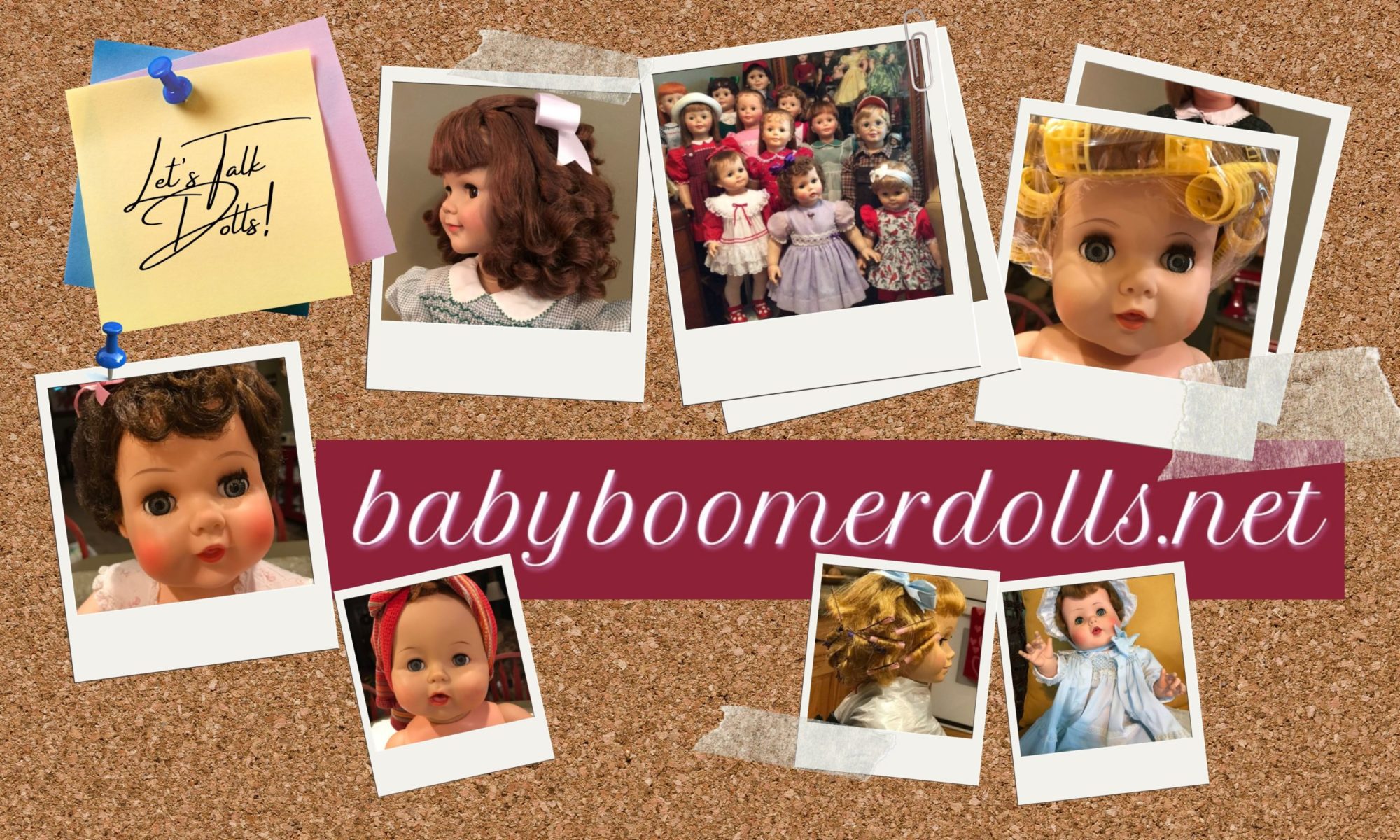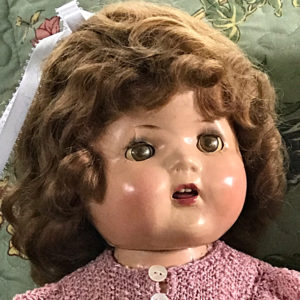
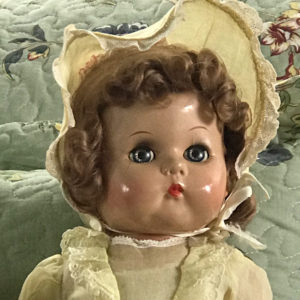

Hello, friends! I’m happy you’re here today! May has FINALLY arrived and I hope it is warmer where you call home than it was when we were together in April. Today we are going to talk briefly about the era of modern dolls, so….”Let’s Talk Dolls”!
Some American composition dolls made in the early twentieth century were thought to be almost revolutionary at the time, however, the real “modern” era in the history of dolls begins in the 1940s – the decade that saw plastics boom and the move to production on a massive scale. Yet, not all modern dolls are plastic, nor are they mass-produced.
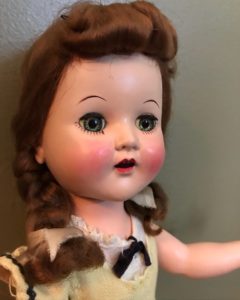
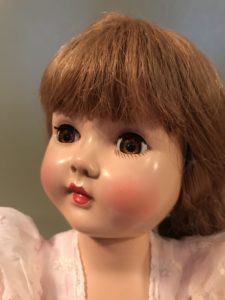
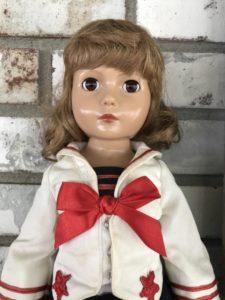
World War II had a major impact on the doll industry in Europe. Suddenly most production ceased where an industry had been built up over centuries. When peace did at last return, it brought with it revolutionary new plastics which were developed to help the war effort and were now available for all manner of applications.
Plastics were light, strong, and easily moulded into an infinite variety of forms. The new plastic material required new equipment and new technologies for production. Initial investment costs were high, but manufacturers found that they could produce millions of dolls that were all identical, or even create a range of dolls based on the same basic model, making only minor modifications to give each doll its charismatic features. Plastic dolls of the 1940s are vastly different than those of today. They were made of hard plastic and although they looked like the composition dolls they largely replaced, they were more durable, lighter, and tougher. Introduced in the mid 1950s was the polyethylene compounds aka vinyl. It is a much more flexible material and available in both hard and soft forms.
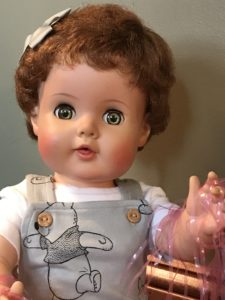

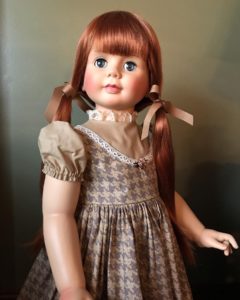
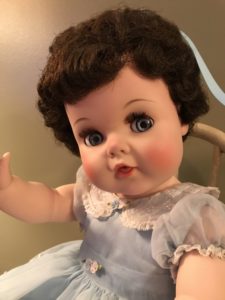
The introduction of vinyl brought with it a whole new ballgame. There was now a key difference in doll hair: whereas composition and hard plastic dolls had wigs or moulded and painted hair, the use of vinyl allowed the hair to be “rooted”into the head. Facial features, hands and feet tend to be less moulded and more defined in these new vinyl dolls than those of their predecessors made from composition or hard plastic. Most dolls today use a combination of vinyls in construction of the doll. Soft vinyl is used for the head and limbs and hard vinyl for body.
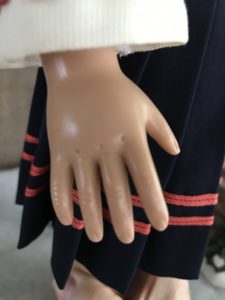


Strong competition and financial difficulties have forced the closure of many of the small individual companies that survived the war years. Today most doll companies belong to giant corporations. They have been forced to merge or to close down completely.
In contrast to large corporate enterprise, doll making still survives as a cottage industry to this day. Across the world, dolls can still be found created in the traditional methods. Only a few of each model are produced and wood or other natural materials take the place of the modern synthetics. These dolls are usually classified as art dolls and are meant to be displayed rather than played with as toys.
The popularity of modern dolls seems to be much more fleeting that that of their predecessors. New models come and go continually as the power of advertising, the influence of the media particularly television and movies encourage the fads and fashions that seem to change almost overnight.
While the charm of many traditional dolls guarantees their continuing appeal, novelty dolls are very much in demand. The great commercial successes of the age are the “dressing” dolls, especially not only those complete with clothing but also with every conceivable accessory. I continue to be amazed by this! Mattel’s Barbie truly embodies this “more is better” philosophy of today’s society. Per Forbes, one billion Barbies have been sold (this is an estimate) since her debut in 1959. Barbies have been sold world wide in over 150 countries. Mattel makes the claim that three Barbie dolls are sold every second. They also claim to have more than 170 types of dolls with different skin tones and hair styles. Barbie has managed to change with the times over the past 60 years and to still be going strong!
There are always going to be doll collectors and everyone will always like/want to collect what appeals to them personally. With that having been said, there will always be appeal and value to either the early composition dolls down to the truly modern dolls of today. I tend to lean toward collecting the dolls I played with as a child, but my oldest granddaughter believes that I need to add a few American Girl dolls into the mix of my collection which is fine with me. It gives us a common ground on which to talk doll collecting, AND I love all dolls!
I hope you have enjoyed this brief synopsis of the evolving of the modern dolls. Until we are together again, stay safe, stay well, and above all be kind to one another!
Hugs,
Lynn
BabyBoomerDolls
